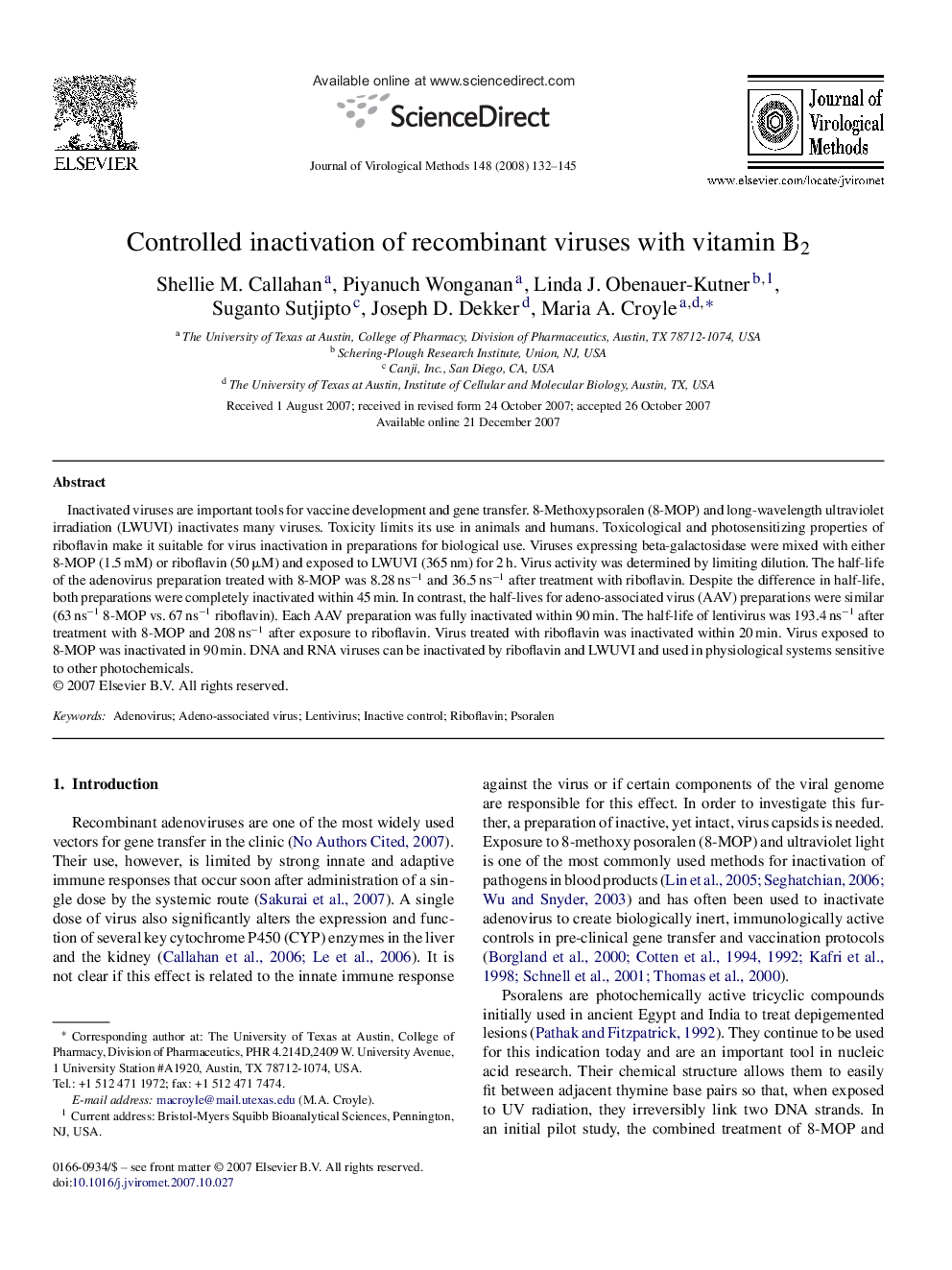| Article ID | Journal | Published Year | Pages | File Type |
|---|---|---|---|---|
| 3407925 | Journal of Virological Methods | 2008 | 14 Pages |
Abstract
Inactivated viruses are important tools for vaccine development and gene transfer. 8-Methoxypsoralen (8-MOP) and long-wavelength ultraviolet irradiation (LWUVI) inactivates many viruses. Toxicity limits its use in animals and humans. Toxicological and photosensitizing properties of riboflavin make it suitable for virus inactivation in preparations for biological use. Viruses expressing beta-galactosidase were mixed with either 8-MOP (1.5 mM) or riboflavin (50 μM) and exposed to LWUVI (365 nm) for 2 h. Virus activity was determined by limiting dilution. The half-life of the adenovirus preparation treated with 8-MOP was 8.28 nsâ1 and 36.5 nsâ1 after treatment with riboflavin. Despite the difference in half-life, both preparations were completely inactivated within 45 min. In contrast, the half-lives for adeno-associated virus (AAV) preparations were similar (63 nsâ1 8-MOP vs. 67 nsâ1 riboflavin). Each AAV preparation was fully inactivated within 90 min. The half-life of lentivirus was 193.4 nsâ1 after treatment with 8-MOP and 208 nsâ1 after exposure to riboflavin. Virus treated with riboflavin was inactivated within 20 min. Virus exposed to 8-MOP was inactivated in 90 min. DNA and RNA viruses can be inactivated by riboflavin and LWUVI and used in physiological systems sensitive to other photochemicals.
Related Topics
Life Sciences
Immunology and Microbiology
Virology
Authors
Shellie M. Callahan, Piyanuch Wonganan, Linda J. Obenauer-Kutner, Suganto Sutjipto, Joseph D. Dekker, Maria A. Croyle,
